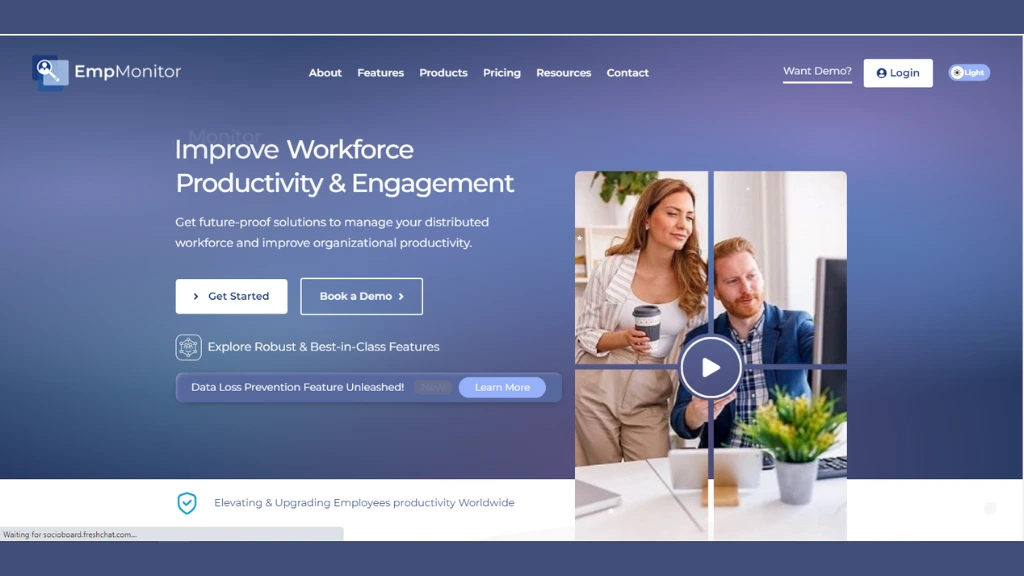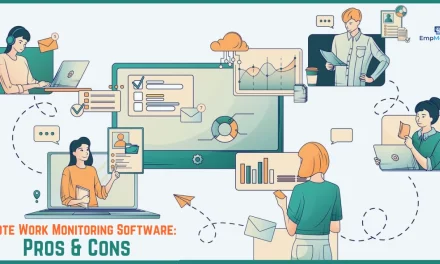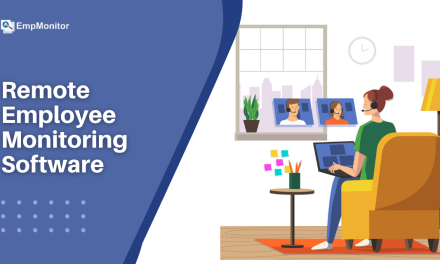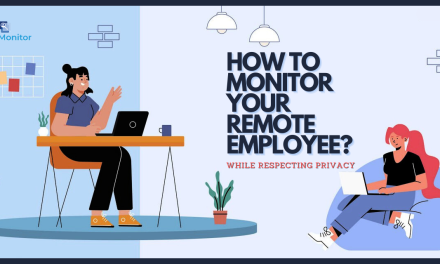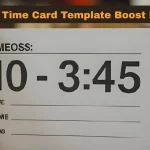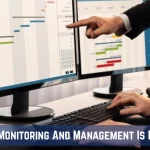Remote employee time tracking presents a maze of challenges in today’s evolving work environment. Coordinating a dispersed team’s schedules, ensuring productivity, and maintaining accountability requires a delicate balance, which can feel like solving a complex puzzle. However, these challenges present an opportunity for innovation and efficiency.
Imagine seamless coordination across time zones, aided by precise remote worker time tracking software. It is more than merely tracking work hours; it’s about providing your team with tools that can go beyond physical boundaries. The complexities of remote work can be turned into stepping stones to success by strategically utilizing technology, fostering transparent policies, and advocating open communication.
This comprehensive guide delves deeply into overcoming the challenges of global scheduling, cultivating trust without direct oversight, and fostering harmonious work-life integration. Discover effective strategies for utilizing remote employee time tracking software, leading to increased productivity and collaboration.
Hit ‘Play’ Button & Tune Into The Blog!
What Is Remote Employee Time Tracking
Remote employee time tracking is the systematic approach to monitoring, recording, and managing the hours and tasks completed by employees working outside the traditional office setup. This process isn’t just about logging hours; it’s a critical tool for businesses to gauge productivity, measure performance, and ensure optimal resource utilization.
The evolution of remote work, accelerated by technological advancements and shifting work cultures, has revolutionized how we approach time tracking. As more companies embrace remote work, the traditional 9-to-5 confines have dissolved, giving rise to a more flexible and location-independent workforce. However, this shift has presented significant challenges in tracking and managing the time of dispersed employees.
Effective remote time tracking requires reliable solutions that ensure transparency without disrupting workflow. EmpMonitor streamlines the process with accurate tracking and productivity insights.
Challenges in Tracking Remote Workers
Inaccurate Time Tracking
Managing remote staff presents a major hurdle: accurately tracking their time. Because remote workers aren’t physically present in the office, keeping tabs on their work hours becomes tricky. This difficulty for managers can result in inaccuracies, impacting productivity and payroll issues in the company.
Coordinating Schedules
Managing diverse time zones is one of the primary challenges of remote employee time tracking. Dispersed team members make schedule synchronization difficult, which affects accurate time tracking and real-time collaboration.
Accountability and Trust
It can be difficult to uphold accountability and trust when working remotely without direct supervision. In order to establish trust and guarantee accountability, it is crucial to have dependable systems and communication. The absence of physical oversight casts doubt on productivity and accurate time tracking.
Productivity Monitoring
Another substantial challenge associated with remote work is ensuring employee productivity. The absence of a physical presence in the office grants remote employees greater autonomy and independence, potentially leading to a productivity shortfall. This autonomy might contribute to missed deadlines, unfinished projects, and an overall decline in efficiency. Addressing these challenges is crucial for maintaining optimal work outcomes in a remote work setup. To monitor productivity, you can use workforce productivity tools like EmpMonitor. It provides actionable insights, helping teams stay on track, meet deadlines, and maintain efficiency in a remote setup.
Distractions and Work Environment
Remote work setups differ widely, with distractions at home or in unconventional workspaces impacting focus. These can pose challenges for employees in effectively managing their time.
Communication Hurdles
Remote work setups struggle with communication barriers rising from limited face-to-face interaction and delayed responses. These hurdles often result in misunderstandings that hinder progress. Overcoming these challenges requires proactive communication strategies and remote employee time tracking tools to bridge the gap and ensure clarity in remote work environments.
Uneven Workloads
Managing workloads and task priorities without direct supervision can cause inaccurate time management and tracking. These may lead to productivity fluctuations and challenges in accurately monitoring team progress and performance.
Isolation and Loneliness
Isolation and loneliness in remote work stem from physical separation, lack of in-person interaction, and limited opportunities for social engagement, contributing to decreased motivation, dampened morale, and reduced productivity among employees.
Work-life Balance and Mental Health
In remote settings, the constant accessibility of work blurs the boundaries between professional and personal life, making it challenging to disconnect. This difficulty contributes to increased stress, causing strained mental health. The following challenge of achieving work-life balance in such setups significantly impacts overall well-being.
How To Overcome Challenges In Remote Employee Time Tracking
The challenges in tracking remote workers‘ time extend beyond mere logistical concerns. These challenges undermine the fundamental aspects of productivity, accountability, and, ultimately, the financial success of businesses. Without a robust remote employee time tracking system, businesses face risks like decreased productivity, mismanaged resources, and an inability to evaluate employee performance accurately.
Acknowledging and addressing these challenges is pivotal. It’s not merely about keeping tabs on hours worked; it’s about fostering a culture of accountability, ensuring fair compensation for work done, and optimizing the efficiency of a dispersed workforce. In navigating these challenges, businesses pave the way for enhanced productivity and streamlined operations.
Embrace Technology Solutions
Utilizing remote workforce management software centralizes time tracking, offering features like timesheets and project tracking. These tools provide comprehensive insights into remote workers’ activities, eliminating obstacles from time and productivity tracking.
Establish Transparent Policies
Organizations should inform about the policies regarding remote employee time tracking to cultivate accountability. Empowering employees with clear expectations enables efficient time management.
Encourage Work-life Balance and Mental Health Support
Promote clear boundaries between work and personal life. Encouraging flexible work schedules and offering mental health resources can significantly improve the work-life balance of remote employees, addressing isolation and reducing stress.
Prioritize Communication and Collaboration
Encouraging regular communication and fostering a collaborative environment bridges the gap created by remote work. Utilizing platforms for team meetings and progress tracking facilitates better coordination among remote teams, addressing communication hurdles and enhancing teamwork.
Promote Social Engagement
Initiating virtual social events, support groups, and periodic team gatherings fosters a sense of belonging among remote employees, which will help them combat feelings of isolation and loneliness. Hence improving their motivation and productivity.
Provide Training On Remote Work Culture
Employers should focus on offering guidelines or resources for setting up dedicated workspaces and promoting a distraction-free environment that minimizes disruptions. This proactive approach plays a crucial role in optimizing remote employee time tracking, enhancing focus, and ultimately boosting productivity.
Implement Time Management Techniques
Offering training on effective time management techniques such as time blocking and prioritization empowers remote workers to optimize their schedules, thereby enhancing productivity and time tracking for remote employees.
Foster Trust-Based Relationships
Shifting the focus towards outcome-based evaluations instead of micromanaging time cultivates trust. Building trust within remote teams fosters a sense of responsibility, contributing to improved time tracking and overall productivity.
Periodic Assessments and Feedback
Regular assessments and constructive feedback ensure alignment with time-tracking goals and provide avenues for improvement, addressing uneven workloads and enhancing performance tracking.
Leverage Remote Worker Time Tracker Tools
Investing in reliable remote worker time tracking tools revolutionizes monitoring by automating time capture and providing customizable reporting. These tools ensure accurate time tracking without intrusive micromanagement, addressing challenges related to tracking progress and maintaining company security.
Remote Employee Time Tracking with Empmonitor
For monitoring remote work management, selecting the right tools is pivotal. One such solution that stands out in addressing the complexities of remote employee time tracking is Empmonitor.
Empmonitor is a comprehensive remote employee management software designed to cater specifically to the challenges faced in time tracking for remote workers efficiently. With its user-friendly interface and robust features, EmpMonitor simplifies the process of monitoring and managing remote employees’ productivity.
Real-time Activity Monitoring: It offers real-time insights into remote workers’ activities, providing a clear view of their tasks and progress throughout the workday.
Automated Time Tracking: Its automated time tracking feature ensures accurate recording of time spent on various tasks, eliminating manual entry errors.
Customizable Reporting: It generates detailed reports that can be tailored to specific requirements, offering a comprehensive overview of remote workers’ productivity.
Screenshots and Keystroke Tracking: For enhanced transparency, Empmonitor captures screenshots and keystrokes, providing a detailed snapshot of remote workers’ activities.
Overcoming Time Zone Barriers: Its real-time tracking capabilities transcend time zone differences, allowing seamless monitoring regardless of geographical location.
Building Trust and Accountability: The transparency offered by Empmonitor fosters trust and accountability among remote teams, mitigating concerns about productivity and accurate time tracking.
Tool Compatibility and Accessibility: Empmonitor’s compatibility across devices and platforms ensures accessibility for remote workers, offering a hassle-free experience.
EmpMonitor simplifies remote employee time tracking with real-time insights, automated reports, and seamless monitoring—ensuring accuracy, productivity, and accountability across teams.
Also Read
Remote Employee Time Tracking And Its Benefits
How To Use Remote Workforce Management Software Efficiently?
Time Tracking Software For Employees: The Next Big Thing In Productivity Tools
Final Words
Navigating the terrain of remote employee time tracking presents an array of challenges that demand innovative solutions. From managing diverse time zones to cultivating accountability and overcoming communication barriers, the hurdles are multifaceted. However, these obstacles are not unconquerable. Embracing technology solutions, establishing transparent policies, and prioritizing communication and collaboration offer robust pathways to success.
Additionally, initiatives to combat isolation, enhance work-life balance, and optimize work environments empower remote employees. They thrive in these settings, fostering a culture of productivity and well-being. Pairing these strategies with time-tracking software like Empmonitor revolutionizes the process. Empmonitor provides comprehensive insights, automates time tracking, and ensures accuracy and efficiency.
By addressing these challenges head-on, remote teams not only enhance productivity but also cultivate trust, collaboration, and a supportive work culture. These pave the way for sustained success in the evolving landscape of remote work.

